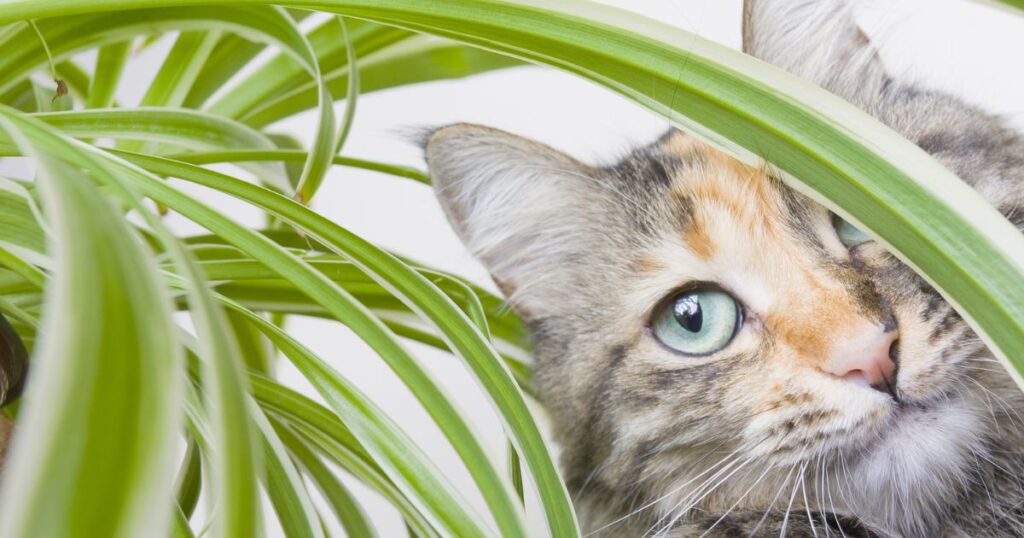The snake plant, or Sansevieria, is a popular houseplant known for its hardy nature and air-purifying qualities. However, it contains saponins, which are toxic to cats if ingested.
Curious cats may munch on this plant, leading to symptoms like vomiting or diarrhea. Keep your feline friend safe by avoiding this potentially harmful greenery.
The Nature of Snake Plants: Species and Varieties
Snake plants, scientifically known as Sansevieria, are popular for their resilience and low maintenance. They come in several species and varieties, each with unique features:
- Sansevieria trifasciata: Commonly referred to as the “Mother-in-Law’s Tongue,” this variety is characterized by its tall, upright leaves with dark green and light gray stripes.
- Sansevieria cylindrica: Known as the “Cylindrical Snake Plant,” it has round, stiff leaves that grow in a rosette formation. It’s often used for its unique, architectural appearance.
- Sansevieria laurentii: Also called the “Golden Hahnii,” this variety features yellow-edged leaves that form a compact rosette. It’s popular for its decorative appeal.
- Sansevieria hahnii: Often referred to as “Bird’s Nest Snake Plant,” it has shorter, more rounded leaves that grow in a rosette shape, making it ideal for smaller spaces.
These plants are valued for their ability to thrive in low light and infrequent watering, making them ideal for indoor environments. They are also known for their air-purifying properties, as they can filter out toxins such as formaldehyde and benzene.
What Happens if Cats and Dogs Eat a Snake Plant?
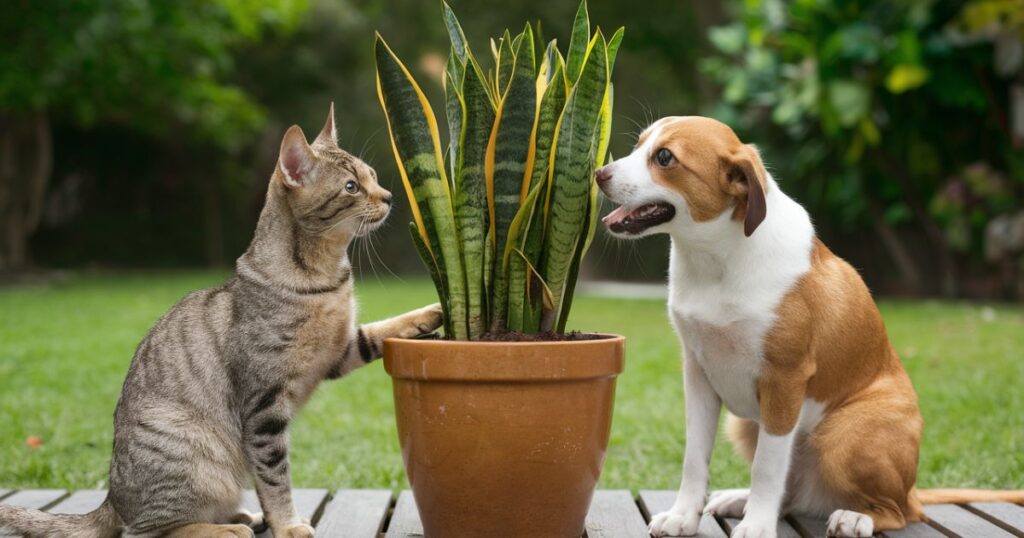
Although snake plants are low-maintenance, they pose a risk to pets. Here’s what happens if cats or dogs ingest parts of a snake plant:
- Symptoms in Cats:
- Vomiting: Cats may vomit shortly after eating the plant.
- Diarrhea: Diarrhea is another common reaction.
- Drooling: Excessive salivation may occur.
- Loss of Appetite: Affected cats might refuse food.
- Symptoms in Dogs:
- Gastrointestinal Upset: Dogs may experience vomiting and diarrhea.
- Lethargy: Ingesting the plant can lead to lethargy or unusual tiredness.
- Drooling: Similar to cats, dogs may drool excessively.
If you suspect your pet has eaten a snake plant, it’s crucial to consult a veterinarian immediately. Treatment usually involves inducing vomiting and supportive care to manage symptoms. To prevent such incidents, consider placing snake plants out of reach or choosing pet-friendly alternatives for your home.
What should you do if your pets eat a snake plant?
If your pet has ingested a snake plant, it’s important to act promptly to ensure their safety. Start by assessing the situation: observe your pet for any signs of discomfort such as vomiting, diarrhea, or excessive drooling. Contact your veterinarian immediately for guidance.
They may recommend inducing vomiting or bringing your pet in for an examination. While waiting for professional advice, remove any remaining plant material from your pet’s vicinity and monitor them closely. In severe cases, your vet might administer activated charcoal to prevent further absorption of toxins or provide other supportive treatments.
Always keep the snake plant’s toxicity information handy for reference and ensure that any treatments or remedies are vet-approved.
Discover Pet-Friendly Plants Online
To avoid future incidents, consider exploring pet-friendly plant options. Numerous online resources and plant retailers offer lists of safe plants for homes with pets. Websites such as the ASPCA’s Animal Poison Control Center or the American Kennel Club provide comprehensive lists of non-toxic plants. Some popular pet-safe plants include:
- Spider Plant: Known for its air-purifying qualities and safe nature.
- Boston Fern: Adds greenery without posing a risk to pets.
- Parlor Palm: A low-maintenance option that is non-toxic to both cats and dogs.
- Areca Palm: Another safe choice that can thrive in various indoor conditions.
By choosing plants that are safe for pets, you can enjoy a vibrant, green environment without risking your furry friends’ health. Always verify plant safety with reliable sources before bringing new plants into your home.
Toxicity of Snake Plants to Pets: Are Snake Plants Poisonous?
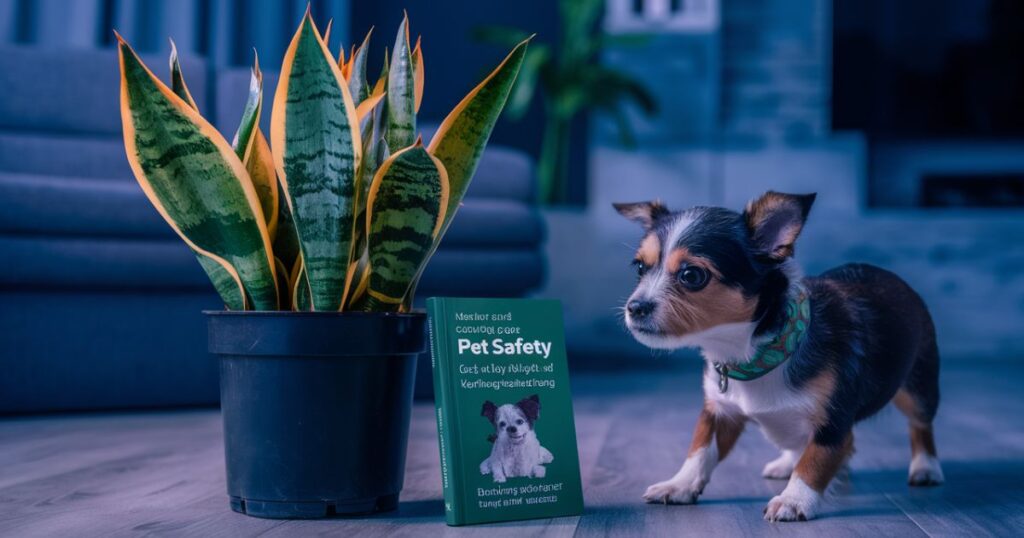
Yes, snake plants (Sansevieria) are indeed toxic to pets. They contain compounds called saponins, which can be harmful if ingested by cats or dogs. These substances are part of the plant’s natural defense mechanism against pests and diseases.
Chemical Composition: What Makes Snake Plants Toxic?
The toxicity of snake plants comes primarily from saponins, which are steroidal compounds found in various parts of the plant, including the leaves and stems. Saponins can cause gastrointestinal distress in pets by interfering with cell membranes and irritating the digestive tract. They may also lead to additional symptoms like drooling or lethargy.
Are Snake Plants Toxic to Pets?
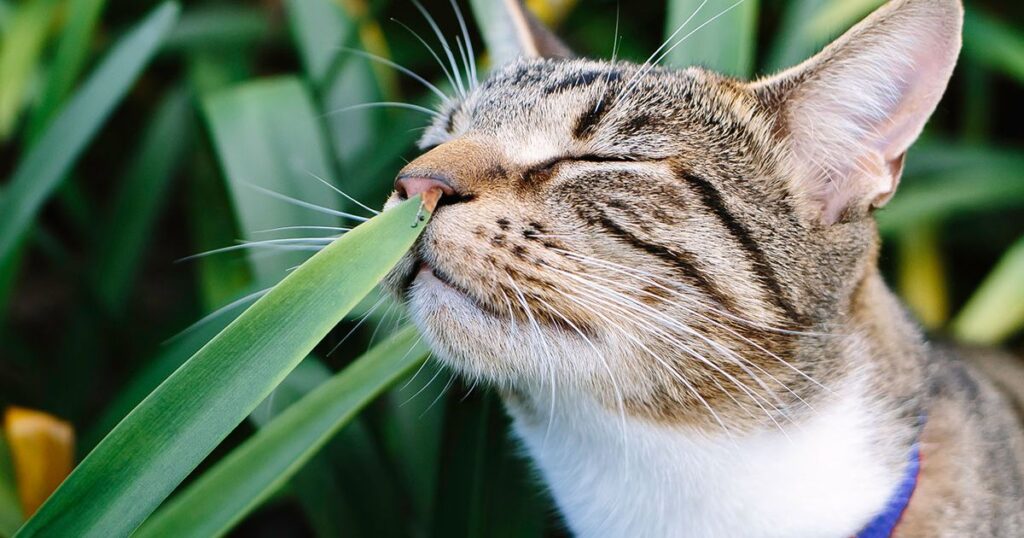
Yes, snake plants (Sansevieria) are toxic to pets. They contain saponins, compounds that can cause a range of symptoms in both dogs and cats if ingested. These natural toxins serve as a defense mechanism for the plant but can lead to discomfort and health issues in animals.
The Effect on Dogs: How Toxic Is Sansevieria to Dogs?
Sansevieria can be quite toxic to dogs. When ingested, it often leads to gastrointestinal upset, including vomiting and diarrhea. Some dogs may also experience symptoms like drooling or abdominal pain.
The severity of these effects depends on the amount consumed and the dog’s size. Generally, the toxicity is moderate, but larger quantities or smaller dogs can face more pronounced issues.
Snake Plant Poisoning in Dogs: What Happens If My Dog Eats a Snake Plant?
If a dog eats a snake plant, it may show symptoms such as vomiting, diarrhea, drooling, and a lack of appetite. In more severe cases, the dog might become lethargic or experience abdominal discomfort.
If you suspect your dog has ingested part of a snake plant, consult a veterinarian promptly. They might recommend inducing vomiting or provide other treatments to mitigate the effects of the toxins.
Can a Snake Plant Kill a Dog?
While snake plants are toxic, they are not typically fatal to dogs. Most cases of poisoning result in gastrointestinal symptoms that can be managed with veterinary care.
However, if left untreated or if a dog consumes a large amount, the risk of severe health issues increases. It’s crucial to seek veterinary advice immediately to ensure proper treatment and avoid complications.
Symptoms of Snake Plant Toxicity in Cats: What Happens If My Cat Eats a Snake Plant?
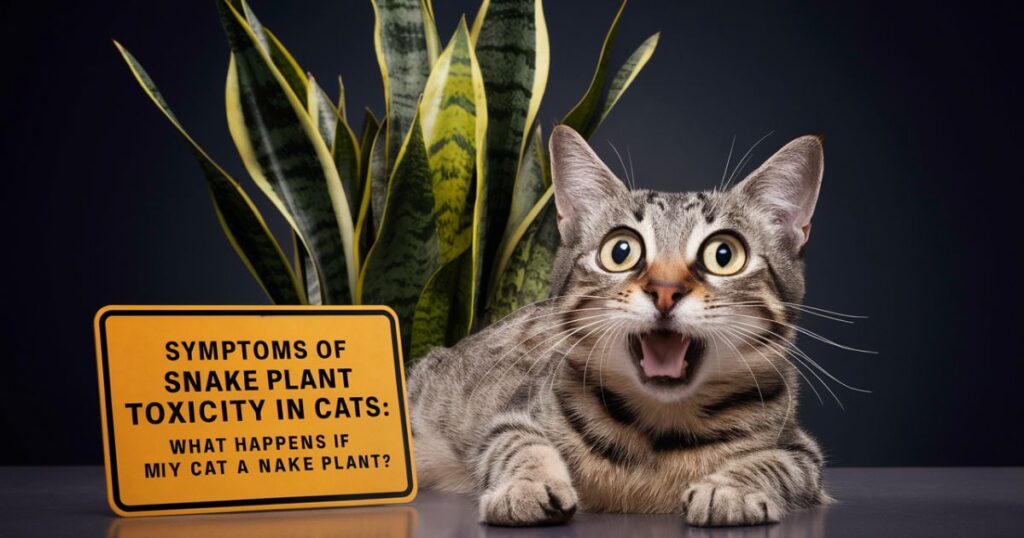
In cats, ingestion of snake plants can lead to similar symptoms, including vomiting, diarrhea, drooling, and a reduced appetite. Cats are particularly sensitive to these toxins, and their reactions can be quite pronounced. Symptoms usually appear shortly after ingestion and can vary in severity.
Can Sansevieria Kill Cats?
Like dogs, cats are unlikely to be fatally harmed by snake plants, but the toxins can cause significant discomfort. Ingesting a small amount typically results in mild to moderate gastrointestinal symptoms.
However, in severe cases or if large quantities are consumed, the effects could be more serious. Immediate veterinary care is essential to manage symptoms and ensure your cat’s safety.
Snake Plant & Toxicity to Pets: Preventive Measures and Safety
Preventing snake plant poisoning involves keeping these plants out of reach or choosing pet-safe alternatives. Here are some effective measures:
- Location: Place snake plants in high, inaccessible areas where pets can’t reach them.
- Pet-Friendly Alternatives: Opt for non-toxic plants like spider plants, Boston ferns, or parlor palms that are safe for pets.
- Education: Learn about other common household plants and their toxicity to pets to avoid future issues.
- Training: Train your pets to avoid chewing on plants by using deterrents or offering appropriate chew toys.
By implementing these measures, you can reduce the risk of your pet consuming harmful plants and ensure a safer environment.
How Do I Stop My Pet From Eating a Snake Plant?

To discourage your pet from chewing on plants, consider these strategies:
- Use Deterrents: Apply pet-safe deterrent sprays to the plant or the area around it. These products have unpleasant tastes that can dissuade pets from chewing.
- Provide Alternatives: Offer your pet safe and engaging chew toys or cat grass to satisfy their chewing instincts.
- Training and Supervision: Train your pets to avoid plants by redirecting their attention to appropriate toys and consistently supervising them when they are near plants.
- Physical Barriers: Use barriers or plant stands to keep snake plants out of your pet’s reach.
Combining these approaches can help protect your pets from snake plant toxicity and create a safer living environment.
Also Read : Why Does My Cat Eat My Hair?: Causes, Risks, and Solutions
Pet-Safe Plants That Are Alternative to Snake Plants
If you’re looking for pet-safe alternatives to snake plants (Sansevieria), consider these non-toxic options that are perfect for homes with pets:
- Spider Plant (Chlorophytum comosum): Easy to care for, this plant is safe for cats and dogs. It also helps purify indoor air.
- Boston Fern (Nephrolepis exaltata): A lush, non-toxic option that adds greenery without posing risks to pets.
- Areca Palm (Dypsis lutescens): Known for its air-purifying qualities, this palm is safe for pets and adds a tropical touch to your home.
- Parlor Palm (Chamaedorea elegans): This low-maintenance palm is pet-friendly and thrives in indoor conditions.
These plants provide a safe and attractive alternative to snake plants while keeping your pets out of harm’s way. For those who love the appearance of snake plants, the Variegated Sansevieria Laurentii is a visually appealing option but should be avoided if you have pets, as it still contains saponins. Opting for pet-safe plants ensures a healthier environment for both your home and your furry
Conclusion
While snake plants are popular for their hardiness and air-purifying benefits, their toxicity to pets makes them a less ideal choice for homes with cats and dogs. Understanding the symptoms of poisoning and knowing what steps to take if your pet ingests a snake plant is crucial for ensuring their safety. By opting for pet-safe plants such as spider plants, Boston ferns, or Areca palms, you can create a vibrant and green living space without compromising your pets’ health. Proactive measures like placing plants out of reach and providing safe alternatives will help protect your furry friends from potential harm and keep your home beautiful and pet-friendly.
People also ask
What happens if my cat eats a snake plant?
If your cat eats a snake plant, it may experience vomiting, diarrhea, and drooling due to the plant’s saponins.
How poisonous are snake plants?
Snake plants are moderately poisonous to pets, causing gastrointestinal upset but rarely life-threatening conditions.
What is the most toxic plant to cats?
Lilies (Lilium spp.) are extremely toxic to cats, causing severe kidney damage and potentially leading to death.
Will my cat eat poisonous plants?
Yes, cats are curious and may chew on plants, including poisonous ones, leading to health issues.

